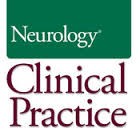Background: Sports concussion has an annual incidence of approximately 3.8 million. Over half go unreported and a substantial number may be asymptomatic. A rapid, cost-effective, and reliable tool that facilitates diagnosis of concussion is needed. The King-Devick (K-D) test is a vision-based tool of rapid number naming for assessment of concussion. In this study, we evaluated the utility of the K-D test in real time for identification of symptomatic concussion in youth athletes and to determine if similar impairment (subclinical concussion) exists in youth athletes without an obvious head injury or symptoms.
Methods: Youth hockey players underwent K-D testing preseason, postseason, and immediately after suspected concussion. Additional testing was performed in a subgroup of non-concussed athletes immediately before and after a game to determine effects of fatigue on K-D scores.
Results: Among 141 players tested, 20 had clinically diagnosed concussion. All 20 had immediate post-concussion K-D times >5 seconds from baseline (average 7.3 seconds) and all but 2 had worse postseason scores (46.4 seconds vs 52.4 seconds, p < 0.05, Wilcoxon signed rank test). Non-concussed athletes saw minimal improvement postseason (43.9 seconds vs 42.1 seconds, p <0.05) and 51 non-concussed players assessed before and after a game revealed no significant time change as a result of fatigue.
Conclusions: Rapid number naming using the K-D test accurately identifies real time, symptomatic concussion in youth athletes. Scores in concussed players may remain abnormal over time. Athletes should undergo preseason and postseason K-D testing, with
additional evaluation real time to inform the assessment of suspected concussion.
Summary Points:
- Examined the K-D Test as a concussion screening tool in youth hockey.
- Pre- and post-season and post-injury K-D Test scores were measured.
- 20 out of 141 players sustained head injuries and had immediate post-concussion K-D scores > 5 s from baseline.
- The King-Devick Test accurately identified all diagnosed concussions immediately following the injury in these young athletes.

